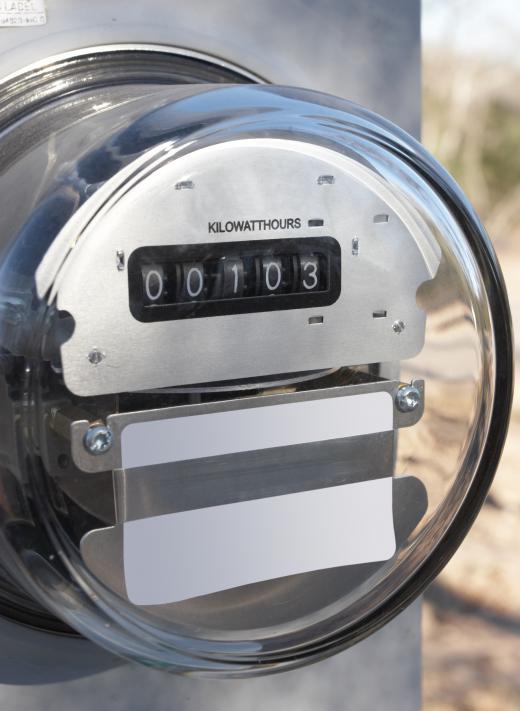Power factor is an amount, expressed as a percentage, which shows a system’s real power output compared to its apparent power output. Real power is the circuit’s capacity at any given time during actual use, and apparent power is the actual power flowing through the system. The power factor is a comparative value; higher-power factor systems require lower amounts of distributed power, while lower power factor systems need more. This value comes into play when finding electricity rates and looking for electrical problems in machinery.
The two portions that make up a power factor are measurements of actual power flow. Real power measures the energy that is actually necessary for the work performed to happen. For instance, a circuit requires a specific amount of electricity to perform a task; that amount is real power. Apparent power is the power flowing through the system. Since real power is flowing but it is combined with other factors in the circuit, apparent power is always higher that real power.

It is the other factors in apparent power that have the actual effect on power output. These factors are anything that influence the power flow through the system and are almost always negative. One common influence on apparent power is power moving backward, called heading to source. This process increases the power in the circuit, but the increase is non-usable energy. Other common factors include charges and discharges from the coil, environmental influences and incorrectly-drawn energy.
The result of these various power types and the influences on the system is the power factor. This value shows the relative efficiency of the device’s power system. A high-power factor means there are relatively few things disrupting the power flow, while a low factor means the apparent power is disrupted. Since it is practically impossible to get rid of all distorting influences, a factor of 100% isn’t really possible. In the same respect, a factor of 0% means no power is flowing at all, another impossibility in an active system.
The value is often used as a comparison between electrical systems. Two systems that operate in the same way with the same power requirement may have different factors. If one system has a higher factor, the lower system has a problem present in either the electrical system or power delivery method.
Electricity companies often use power factor to determine power rates for large customers. Companies that have a high factor are likely to receive price breaks and incentives due to their efficient use of available resources. Companies with low factors are often charged more as an impetus to improve their machinery and infrastructure.
